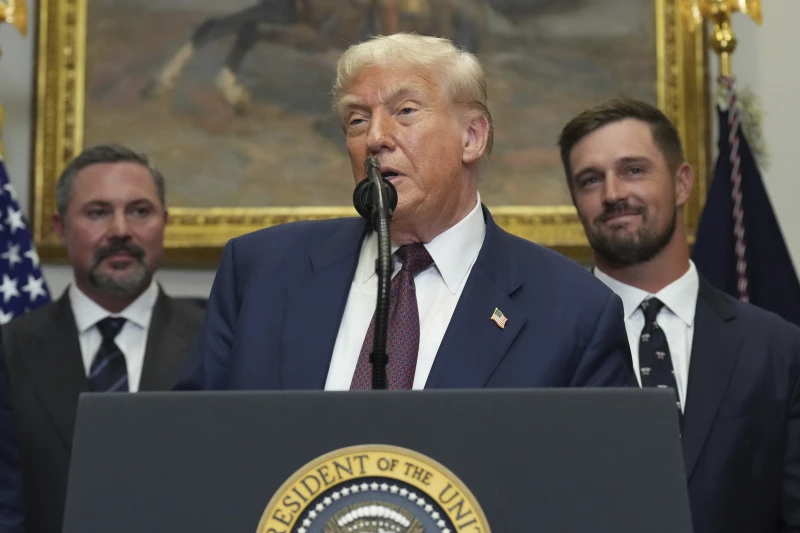As the United States tightens tariffs on major apparel-exporting countries, Bangladesh’s garment sector finds itself at the centre of a rare trade opportunity.
With President Donald Trump’s administration imposing a 30 per cent retaliatory tariff on Chinese apparel, and a 25 per cent levy on Indian exports, American importers are urgently redirecting orders to alternative sourcing countries, said apparel exporters.
Among them, Bangladesh stands out for its tariff advantage, scale, and proven reliability.
“Buyers’ representatives are reconnecting, and previously held-up orders are now returning,” said BGMEA President Mahmud Hasan Khan at a press briefing on Saturday.
“Our exporters are already seeing the impact of the shifting dynamics,” he added.
According to World Trade Organization (WTO) data, China led global apparel exports last year with $165.24 billion (29.64 per cent share), followed by Bangladesh with $38.48 billion (6.90 per cent).
However, while China’s apparel industry is now losing momentum due to tariff hikes—evident in the 22-year low in US apparel imports from China in May—Bangladesh is picking up the slack.
Export Promotion Bureau (EPB) figures show Bangladesh earned $7.54 billion from US garment shipments in FY2023–24, posting a 19.18 per cent growth, reinforcing its strategic position as a top supplier.
BGMEA Director Faisal Samad noted, “This is not just about tariffs. The broader US-China trade war is triggering a long-term realignment. Bangladesh must respond with agility.”
Apparel comprises 86.20 per cent of Bangladesh’s total exports, far exceeding Cambodia (36.70 per cent) and Pakistan (26.80 per cent), highlighting the sector’s economic significance.
In contrast, China’s apparel exports represent only 4.30 per cent of its diversified trade portfolio—although it continues to support the sector with subsidies and incentives.
Bangladesh Apparel Exchange Managing Director Mohiuddin Rubel added, “As China scales back and others like India and Vietnam diversify, Bangladesh is uniquely positioned to absorb a larger share of global apparel demand. But this will require targeted policy and infrastructure readiness.”
As apparel buyers seek duty-free or low-tariff sourcing destinations, industry leaders stress that Bangladesh must act decisively—not only to capture diverted orders but also to ensure long-term competitiveness through innovation and market diversification.


